|
We are just minutes into the rally, and I’m clutching onto some key advice:
Dave, my rally Obi-Wan, is a case in point. He’s the owner of over a dozen classic cars, including a pre-war Bentley and Rolls Royce. That’s pre World War 1. A 25-year rally veteran, Dave’s run the Peking to Paris (twice), along with rallies in Australia, New Zealand and Europe. For the Northwest Classic, open to pre-1981 collector cars, Dave’s selected his reliable 356 Porsche. He explains it will allow him to focus on the race, as opposed to keeping the car going. Race is not exactly the right word. It’s more like a Sunday drive, with two hundred good friends, and a purpose. Crawling along the I5 to Portland, Dave gives me the basics of time-speed-distance rallying. Drivers and navigators are given instructions that must be followed to the letter, and to the second. Each car is spaced one minute apart, driving at suggested speeds to enable us to reach, say, a particular stop sign in exactly 2:43 seconds, or a right turn at 7:29. Teams calibrate their odometers, and must factor traffic and rally rules. We never exceed the speed limit, unless we’re running late, in which case, well, these are classic sport cars. The Rally Master adds traps designed to bamboozle even the most alert navigator, steering us off course, resulting in time penalties or lost minutes. Each day might feature up to 10 stages, comprised of a start, finish, and time check by a team of volunteer marshals hidden somewhere along the route. Dave warns me that it doesn’t help to follow the car in front of us. They could just as easily lead us off a cliff as to the next checkpoint. As a first time navigator, I am determined not to let my driver down. Dave’s wife, who normally takes the navigator role, has already warned me: Whatever is said in the car doesn’t count. Things can get heated when the pressure is on, and a slight navigator omission can send our car rallying down the rankings. There’s even a tongue-in-cheek award, the Flying Clipboard, for the team most notably cracking at the seams. Still, don’t hold your breath waiting for road rage. Vintage rallies are first and foremost about the cars, the driving, and the community it brings together. Owners come from all walks of life, taking pride in their aging Alpha Romeos, MG’s, Fords, Mercs, Saabs, Porches and other models. The average car at the race might cost around $30K - $50K, but there are some standouts, like a 1963 AC Cobra, worth a cool half a million dollars. Laurie and Verna own a dozen collector cars. “I got my first MG at 21 years old, and it was all downhill from there,” explains Laurie. Vintage cars sound like an addiction. Another racer from Coquitlam tells me there are two events he would never miss: The Northwest Classic, and BC’s Spring Thaw. He speaks of them with the reverence of a family Christmas. I’ve nicknamed Dave’s Porsche The Silver Bullet, because its classic, capsule-shaped, and could probably kill a werewolf. A 1600cc engine with 90 horsepower, it’s no speed demon, but that’s why Dave likes it. It’s not about getting from A to B on an air-conditioned cloud. Our Porsche has no computers, plush leather, or cruise control. We sit low to the ground, on worn leather, feeling the growl of the engine. 50 mph never felt so cool. As we scoot around Oregon’s coastal farm roads, I tick off checkpoints, calculate our times, watching out for traps. I’ve had to familiarize myself with rally terminology: CAST: Change Average Speed To. SAP: Straight as Possible. ITIS: If There Is Such. At the close of the first day, we’ve lost just 2 minutes off the pace, placing 16th out of a field of 113. I’m a rally virgin kicking butt. During stage 6 on the final day,I confuse an ONTO/TOWARD instruction and lead us straight into a trap. Dave remains supernaturally zen about my screw-up, even as we slip down the rankings to finish 31st overall. At least we didn’t receive The Hook, awarded to the car that needs a tow truck. That honour belongs to another Porsche 356, not quite as reliable as our Silver Bullet. The Northwest Classic is just one of dozens of rallies that take place around the continent, drawing collectors, enthusiasts, and members of various motor clubs. Some are competitive, others more social. When we line up our cars – on a downtown Portland street or stage meeting lot – crowds gather to ogle at rows of spit-polished cars on display. Owners get an obvious buzz showing off their pride and joy, and might even barter for new acquisitions. War stories are traded, from those that have braved the grueling frozen roads of the ALCAN 5000, to the pot-holed corruption of South American rallies. Road trips have always been one the best ways to see a country, especially in your favourite car. You’ll definitely find yourself on roads less travelled. I notice that many teams are husband/wife couples, or retirees enjoying the good-life adventure. “We’re all growing old,” says Dave, “together with our cars”. Younger drivers are definitely welcome, so long as they have a qualifying car and a driver’s license. Rally entrance fees range from $500 for the Northwest Classic to $2900 for the ALCAN, so you don’t have to be a millionaire to participate, or even a competitor. Many rallies now have touring groups with no rules or time trials. Dave lets me take the wheel on our long drive back to Vancouver. This time, we’re taking the longer, scenic route to avoid the traffic on the highway. The Porsche hums along the coast, reflecting tree tunnels, turning heads. There’s no power steering, no air con, and no CD Player to distract me from the act of driving itself. Classic cars are all about the experience. Much like the rally events that bring them together.
0 Comments
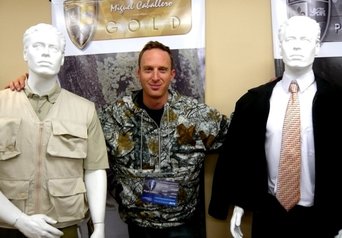 For those in lofty positions of wealth and power, security is embedded into their way of life, and sometimes, even into the very fabric of their clothing. There is only one company in the world that manufactures high security fashion. Introducing Miguel Caballero, the bulletproof tailor of Bogota, also known as the Armani for moving targets. Founded in 1992, the company has developed its own armour plating technology to allow the subtle infusion of fashion and state-of-the-art personal protection. With a background in marketing rather than weapons or fashion, its CEO Miguel Caballero recognized and subsequently created what he calls the “high security fashion business.” Caballero discards clunky, heavy and uncomfortable Kevlar bulletproof vests in favour of slim panels that can be inserted into a wide range of tailored garments. That such an innovation took place in Colombia, which has one of the world’s highest violent crime rates, is no accident. A product manufactured for life in Colombia will stand up to life just about anywhere. With 80% of its orders coming from overseas, Caballero’s security-conscious customers appear to agree. On an unassuming street in Bogota sits the white, low-rise building that serves as headquarters and factory for Miguel Caballero. With an elite clientele visiting for fittings and some 282 employees, security is tight. Bogota also has one of the world’s highest rates of kidnapping, and Caballero’s local clients in the financial, insurance and business sectors are prime targets. Visitors are screened in a waiting room before being buzzed into a modest showroom, demonstrating the wide range of products manufactured and branded by the company. Specialized plates inside loose fitting black leather jackets are capable of stopping bullet rounds, or even a knife attack. Here you will also find casual sweaters, the kind you might see on a jogger, only with strategically positioned lightweight armoured panels in the front. The company also makes suede blazers, raincoats, polo shirts, and a popular women’s line too. There’s even a bulletproof tie, available in various colours, and looking only slightly more swollen than normal. While Miguel Caballero has achieved fame for its security-conscious fashion products, it also supplies military, private security, and police forces with armoured garments, including riot gear, police uniforms, and flak jackets. In an act signifying both clever marketing and faith in his quality, employees of the company are requested to try on the product before they are allowed to sell it. Then they get shot, to test first-hand its ability to stop a bullet. When your job description includes receiving a bullet, you better believe in what you’re selling. Only Miguel Caballero will fire the shot, and in some cases, this includes shooting clients or their bodyguards to satisfy the buyer’s piece of mind. Caballero employees are prepared to literally stand behind, and come under fire, for the products they make. The factory receives regular and curious visitors, many of whom are given guided tours of the premises, although certain parts, such as the vest assembly area, are off limits for photographs. While company policy is not to reveal the identities of clients, Mr Caballero lists several satisfied customers. These include politicians, royalty and Hollywood stars. The action star is a VIP client who owns several customized items, including a one-of-a-kind bulletproof kimono. When it was reported that sources within the US secret service revealed Barack Obama was wearing a bulletproof suit at his inauguration, all eyes turned to Miguel Caballero. I'd expect Donald Trump did the same. Caballero, who founded the company while still a university student, cites company policy and appears content to neither confirm nor deny the claim. While the company has received its fair share of media attention, it values and promises its clients the utmost discretion. They are, after all, only safe as long as the bullet hits the area protected by the armoured panels. The aim of bulletproof vests is to save lives, not prevent injury. Antonio Arias, the company’s ballistic director, carefully measures how each vest absorbs the impact of a bullet, ensuring that while the unfortunate recipient might walk away with a bruise, at least they will still be walking. The exact design of the armoured vests is a carefully guarded trade secret, but the company have been certified by a number of defence and security regulators (such as the US National Institute of Justice), and holds a half dozen certificates from impressive sounding acronyms like the IDIC, RENAR, and ICONTEC. Without getting into technical details, Arias explains that Caballero armoured panels are constructed by layering and compressing nylon and polyester that is designed to absorb and minimize impact. The added advantage of not using traditional Kevlar is lighter weight, flexibility, and the opportunity for increased discretion. To see for myself, I am handed an Uzi machine gun and allowed to fire into a vest, supported against soft clay that will absorb the bullet, simulate the impact on skin, and allow accurate measurement. The secured room is small, with employees looking on behind me through a glass window. Standing about ten feet away from the target, I slowly squeeze the trigger, and am immediately surprised how real guns make a sharp, deafening pop, as opposed to the bang we hear in movies. The bullet hits the target almost dead centre. Arias unhooks the vest to reveal a one-inch crater in the soft clay. According to Antonio, smaller bullets might feel like a “finger flick”, but an Uzi shot is going to leave a considerable bruise. Save lives, not prevent injury. I was looking forward to testing out a vest on myself, but my one shot to be, well, shot, was thwarted by Senor Caballero being overseas on business. With over a dozen distributors in countries like Lebanon, Spain, Ukraine and India, Senor Caballero has been on the road a lot these days. The company also has showrooms in Miami, Mexico City, Guatemala, and sells its wares inside Harrod’s of London. 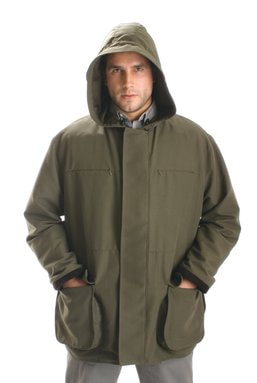 Being able to embed safety discreetly into fashion is a mission of Miguel Caballero, and this means integrating international styles and customs. While a three-piece suit or leather jacket fits into the lifestyle of the United States, it might not work in markets with different cultural leanings. The key to the company’s success has been its unique ability to provide safety and style for to its clients, so they can feel protected without publicly advertising to others that there is any need to be. With this in mind, the company is developing Kurta Pyjamas, Nehru vests and coats for India, and colourful tunics that have been customized for African clients. In the showroom, I try on a hooded sweater that would not be out of place on a college campus. Covering my chest are flat panels stitched directly into the fabric of the garment. It feels like I have a paperback book in a pocket, one that uses state of the art technology and can save my life. After trying on a black leather coat, endorsed by Steven Segal, I slip on a traditional armoured vest and immediately feel the difference. While both products will protect me, one makes me feel like a target, the other makes me feel stealthily invincible. Special measurement charts are available, and clothing can be designed and customized according to specification without clients needing to visit a showroom. Garments come in the typical sizes of S/M/L/XL/XXL, with minor adjustments made locally. There are various collections in the Miguel Caballero range, differing greatly in function and price. The Silver Collection is designed for private security, as in the traditional vests you might see on bank guards, transportation agents, and hefty bodyguards. The Classic Collection, in standard army or camouflage colours, is designed for military, government, and police operations. The Gold Collection is for high profile clients that follow an “American lifestyle” of sport, hobbies and multifunctional comfort wear, while the newly launched Black collection is designed to appeal, according to the company’s catalogue, to “people that prefer European fashion; sober, elegant and exclusive.” These include polo necks, slim cut leather jackets and lightweight Goretex waterproof coats. Each garment is further customized with an armoured level of low, medium or high, depending on the amount of risk, and the kind of weapons, one expects to be on the wrong side of. The heavier and thicker the vest, the bigger the bullet it hopes to stop. While life may seem cheap in certain high crime zones, high security fashion is not. A typical Caballero Black item can range from US$2000 to $7000. Lining thick enough to prevent knife attack, and other customizations, may cost extra. With a boutique store in Mexico City alongside Louis Vuitton, Cartier and yes, Armani, Caballero products have the added value-point of offering life or death for its clients. There’s even an exclusive club for Caballero customers. To be a member, a Caballero product must save your life. How many members it has remains a company secret. Whether it is world leader on a podium, visiting royalty, or just a businessman on an important trip to a city renowned for instability and violence, there’s no doubting the piece of mind that comes from knowing your leather jacket will stop a bullet. But while the labels inside Miguel Caballero’s high security fashionware give washing instructions, they do not explain how to prevent anyone aiming a gun at you in the first place. For a complete catalogue of the company’s products, and to find out more information, visit the company’s website at: www.miguelcaballero.com
The Fire Doctor of Taipei has coated my back with a brown paste of herbs, covered me with a towel, and spritzed on some alcohol. After lowering the lights, he tells me to be calm, and then lights up the blowtorch. I hear a sound not unlike that of a gas burner being lit, and catch the reflection of flames off a nearby mirror. It takes a few moments to register that the source of the fire is my back, followed by the sudden rush of intense heat. For over a dozen years, Master Hsieh Ching-long has been using open flame to rid the pain. Master Hsieh (pronounced Shay) created fire therapy a dozen years ago after medical training in Beijing, applying his knowledge of traditional medicine, martial arts, and pyromania to invent a powerful treatment for muscle aches and sports injuries. Photos on display in his small clinic depict the doctor with several dozen local celebrities, and he tells me that business is booming. “Not anybody can heal with flame,” says the Fire Doctor. It requires years of martial arts training, so that you can channel your inner energy and use your hands as iron. I’m not sure what this means exactly, but it sounded comic-book cool, and when he demonstrated the above by ripping an apple in half with his thumbs, I knew I was in good hands. Being set alight was my thrill of choice in Taiwan, the “other” China. Officially recognized by only 23 countries, the island nation lives in a constant state of tension with its larger Chinese neighbour, with mainland invasion just a few missiles away. Established in 1949 after the communist revolution, Taiwan’s US-supported economy boomed, its democracy flourished, and today it is amongst the sharpest claws of the Asian Tiger economies. With political rhetoric heating up, many look to the success of Hong Kong as a potential future for the peaceful reintegration of Taiwan and China. In the meantime, I had my own heat to deal with. I was hoping Master Hsieh could use his able hands, scarred with burns over time, to untie the thick plane knots in my back. My treatment would come in three stages. Firstly, he would use heated glass cups to realign the energy. Gwyneth Paltrow popularized this treatment a couple years back when she revealed the source of the circular purple welts on her back. It was only during my second treatment, when the blowtorch was fired up, that my nerves began sweating. The herb paste burns for a several seconds before the good doctor douses the flames with a towel, and massages the intense heat into my skin. “Now for the dangerous part,” he says, in which open flame is applied directly to the skin. Photos of other patients on the wall showed grilled skin, lines like steak on a barbeque. I sit upright, and feel the flame rolled down my back on cotton doused in alcohol. It hurts. A lot. I smell the sickly-sweet scent of skin being scorched. Finally, the doctor uses his vice-grip hands for a deep tissue massage, and signals the end of the treatment. My back is bright red, but thankfully free of burn marks. I step out into the heat of Taipei, my adrenaline ablaze; the stiff muscles from yesterday’s long-haul flight slashed, burned, and cast off into oblivion. Master Hseih Ching-long’s Fire Clinic is located at No.2, Sec. 1, Chenggong Rd., Nangang District, Taipei City 115, Taiwan. Treatments typically last 40 minutes, and cost around $35 per session. Different skin can react to open flame in different ways, and heat bruises are common.
I awake at 5am, a blessed night of sleep after a 20-hour+ transit, eager to make my way downtown to participate in the Melbourne Marathon. Well, not the 42km marathon, but the 10km run part of it, my first. I book an Uber for the first time, which is a game-changer (as everyone knows), at least as far as the guy can drive me before the roads are cordoned off approaching Flinders St. My toes still feel the phantom nibbles of the grey rabbit that shared last night’s abode, a friend of a friend’s place, in a neighbourhood in northern Melbourne called Travencore. The rabbit’s name is Tanpopo. There is also a girl who stays up all night listening-watching Celine Dion on Youtube. She was awake listening-watching to Celine Dion when I crashed early at 8:30pm. She was awake listening-watching to Celine Dion on Youtube when I awoke at 5am. She says she is nocturnal.
Marathon start at 7am, shortly before battery dies
Flossing teeth during my first visit to Melbourne, 2005
Finishing line inside the MCG
This is Tanpopo
It's not every day you find yourself walking the streets of a Bavarian town located deep in the Cascadia mountains of eastern Washington State. Mind you, it’s not the first time I’ve seen a German village manifest thousands of miles from Europe. In Brazil, there’s a town called Blumenau which has a similar look and feel of Washington’s Leavenworth, but a far more German-ey sounding name. Both towns have a manicured appearance and attractions that is somewhat charming and a little sinister. My friend Jon described Leavenworth as “a Joseph Goebbels designed Disneyland.” Fortunately, we’re not here for the schnitzel, which regrettably, wasn’t worth writing about anyway. We’re on a road trip to the Channeled Scablands, site of what once the planet’s largest-ever waterfall. Picture a five-foot brick wall. Place a penny on it, and that would be the size of Niagara Falls compared to the cataclysm of water that flooded Dry Falls during the last ice age. There are a number of theories as to what caused this massive flood, and it took decades for one particularly determined geologist named J Harlen Bretz to convince the scientific community that the aquatic destruction in northern Idaho, northwest Montana and southern Washington was simply unprecedented. Did the walls of an ice dam break, unleashing the flood? Did a comet strafe the polar ice caps, causing a sudden melt that not only resulted in the world’s largest waterfalls, but inspired the ancient stories of Noah's Ark and Atlantis? I contemplate this standing on an extended viewing point overlooking Dry Falls, a canyon stretching 3.5 miles wide and dropping 400 feet. Ten thousand years ago, the surf was up. When it comes to geological wonders, you have to use your imagination, although illustrations in the adjacent visitor centre paint a vivid picture of 100ft waves smashing into the plains. Water picked up giant rocks and dropped them like seeds hundreds of miles away. Incredibly, people and animals were living in this area at the time. If any survived, how would they have described such an event? The end of the world? Punishment from the gods? There are over a dozen Native American flood myths which describe exactly that. Some of them include a great ship built by an honest and noble man to save two of every animal. Sound familiar? Exploring the side roads of the Scablands Dry Falls, site of the biggest flood in history In search of cherries One of my favourite authors, Graham Hancock, visited the Scablands and makes an excellent argument in his new book about the tell-tale signs of a lost civilization, forgotten to history due to a cosmic cataclysm. New research does indeed point to some form of celestially-inspired impact - a comet or asteroid - triggering massive floods about 10,000 years ago, pretty much rebooting humanity. Survivors of an advanced civilization might have well regressed back to the Stone Age. The geological evidence is on show in the Scablands. It’s fascinating stuff, and the theories are way too intricate to get into here. But it did inspire me to come and have a look at the Scablands for myself. Unlike the badlands of Saskatchewan and Alberta in Canada (or Montana and Wyoming in the US), the Scablands resemble streaks of havoc through fertile, largely flat farmlands. It makes for an exceptional road trip from Seattle, Portland or Vancouver, crossing mountain passes and gorgeous forests until you arrive in the fruit-growing region of Washington, and press onto the stark, cracked and dry Scablands. Along the way expect to see some unusual roadside attractions, like:
The road is long, with many a winding turn Checking out land ripples Dry Falls is a Washington State Park Heritage Area, and the small but useful interpretation centre is a roadside attraction for bikers, RV'ers, and curious bucket listers. The viewpoint, as you can see below, is well worth the pit stop. It doesn’t really surprise me that many people who live in the region don’t know about the fascinating, historically significant and scenically stunning Scablands. My efforts to contact anyone who actually serves to promote tourism in Washington were as fruitless as the pock-mocked Scablands themselves. Not too far away however, plump apples and pears are bursting in the groves that line the highway. There is always hope.
Thin metal rods are poking out of a giant tree, spiralling up and up (and up) towards a wooden platform, seventy-five metres in the Western Australia sky. These karri trees are among the tallest hardwoods in the world, and this particular tree, the tallest in the forest, was used as a fire lookout for any trouble smoking in the area. It seems like an innocent enough roadside attraction, just fifteen minutes drive from the gas and beef pie pit stop of Pemberton. How often we find Bucket List experiences in the most unlikely places.
I drive into Warren National Park out of curiosity, captivated by a sign directing visitors to the Dave Evans Bicentennial Tree. Playing on my iPod is U2, a sign of perfect synchronicity. Dave Evans is the real name of guitarist The Edge, and his namesake tree, a pure coincidence, seems destined to deliver the same.
At the top of this lookout tree sits a large platform weighing two tons. To get there I must climb 130 erratically staggered thin black rods, thrusting myself up between ever widening gaps. From the bottom it looks harmless enough, mostly because one can’t see the top. I start eagerly, one pole at a time, a little unnerved by the thin wire safety net. Good for a falling baseball cap, not the person attached to it. Looking down for the first time, my knees become as wonky as a Central African government.
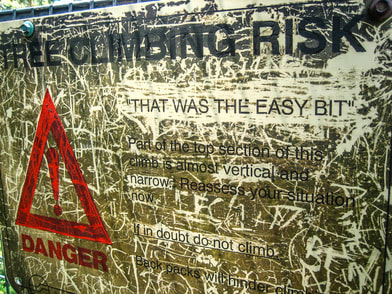
I clutch the thin poles so tight my arm muscles cramp, my toes clenched so hard you could crack a bullet between them. Higher and higher, and just when I am sure I might absolutely wet myself with fear, I reach a small wooden platform. A truly unhelpful sign reads: "That was the easy bit, mate!" Aussie Aussie Aussie, oy, oy oy…vey.
A sturdy tanned Australian fellow crawls down from above. "C'mon mate, once you're this far, you may as well go all the way to the top," he says, in that typical Australian drawl which makes any stranger seem like an army buddy. It encourages me to continue my climb, cursing ever-present Australian sticky flies, relentlessly crawling into my nostrils and ears. I reach another rest platform, and another, and then another, until at last, I am on top of the tree, dripping in sweat, staring above the dense forest in all directions. The sea casts a blue glow on the horizon. My knees are still swaying, but that might have something to do with the tree itself, dancing to a gentle ballad in the wind. In strong wind, the trunk can sway almost two metres in either direction.
Cautiously, I make my way down, wondering why they don't sell T-Shirts at the bottom. Perhaps: U2 can survive the Dave Evans Bicentennial Tree. I wonder how many people have slipped, and if the safety net did its job. I wonder who Dave Evans is, and whether he might be the unfortunate chap who can answer both questions. Assuming the latter was affirmative.
The climb takes about an hour, and trust me, it is far scarier than any tree you ever tackled in your childhood. There isn’t even an official around to call an ambulance should you drop out the sky. Although if there is, he might tell you: “it’s just a tree, mate! We have spiders bigger than this.”
Thumbs up for the post that sets out to understand the origins of the signs and symbols we use on our hands, and how they might differ from country to country. Inspired by my visit to Portugal, where people wear necklaces telling you to $#% off. Or do they? The Figa I grew up in South Africa, and if anyone ever placed their thumb between their index and middle finger, they were telling you, in no uncertain terms, what you should go do with yourself. It was even worse than the bird (which I’ll get to later). So imagine my surprise to see the figa, or fig, worn around necks, painted on walls, and hanging from walls in Portugal! It turns out that the figa is an ancient Roman symbol used for good luck, and to ward away evil spirits. It’s also, coincidentally, the letter T in American Sign Language. Yet because of its physical appearance, resembling a sexualized vagina, some countries including Indians, Italians, Turks, Russians, and certainly South Africans take it as a definitive insult. So while you may want to wish your Portuguese friends good luck with a figa ornament, you might want to make sure it’s not for those at a South African wedding. The Corna “Hail Satan!” Or perhaps: “Rock on, Dude!” Or maybe just: “Go University of Texas!” A clenched fist with the index and fifth finger pointing skywards, you’ll see the Corna at most heavy metal and hard rock concerts, an almost universal sign to rock! Growing up, I remember a certain taboo with the sign since it definitely had some sort of Satanic connotations, appearing as it does in the Satanic Bible. However in Austin, at the University of Texas, the Corna is known as “hook-em horns”, used to cheer on the Longhorns, resembling their mascot, a longhorn steer. The V Sign V is for Victory! V is for peace, man! Or, if your palm is inwards, V is for something else entirely, depending on where you are, of course. In the UK, or other English speaking countries, the palm inwards is an insult not unlike the bird (which we’ll get too soon enough). Confusion was caused by Winston Churchill, who used both front and back V’s during the war before he was told of their correct and appropriate usage. Stick your nose between the fingers, and Italians will get your point too. Also, expect something to be lost in translation should a Canadian deaf person order two drinks at an English pub. Thumbs Up According to sources, here’s a hand sign that is particularly sensitive to culture and location. We know it as “go for it!” or “awesome!” or “hey buddy, can I grab a ride somewhere?” In the Middle East, Latin America and West Africa however, you’re basically flipping the bird (which I’ll get to I promise). We probably developed its western connotation from pilots during World War II, and surprisingly it appears there is no evidence it was used during gladiator fights in Ancient Rome. But it’s best to avoid using the thumbs up in countries like Afghanistan or Nigeria, where it is used, you guessed it, as a substitute for the middle finger. The Five Finger Scrunch Israelis use it for just about everything, but other cultures along the Med are familiar with it as well. Scrunch your fingers together, turn your palm upwards, and you get a hand signal that means, well, anything you want it to mean. “Wait a minute.” “Hurry up!” “Relax!” There’s an element of frustration in the gesture, but like many of the others mentioned, it manages to transcend language, communicating with fingers what words do not. The Animal Palm down, point four fingers at a Korean, and you get a hand symbol steeped in inter-cultural warfare and hatred. The Japanese were known to use this symbol to regard their Korean enemies as “animals”. No word if Koreans responded with the forearm jerk. The Forearm Jerk Leaving the middle finger closed for a change, this insult simply requires the left hand on the folded right arm, and the right fist extended skywards. Slapping the hand down adds to the insult, which is perfectly understandable the world over, regardless of what language is spoken. The Finger The Bird. The Flip Sign. The Zap. The unholy middle finger! There are various theories as to its origins, but the one I like best dates back to the 100 Year War in Europe. See, archers were quite deadly in those days, using their middle fingers to release arrows from their long bows. If captured, it was practice for the English (or French, depending on who you believe) to chop off the middle finger of the archer, unloading their weapon if you will. Archers that escaped, or just felt cocky, would raise their middle finger to taunt and insult their enemies, and today we follow their lead. There’s also a theory that it evolved form Ancient Greece, relating as it does to the phallus (much like most hand insults). Regardless of its origins, the bird is probably the most universally understood hand sign, although in some Arab and Mediterranean countries the index finger is used instead. The Vulcan Salute OK, this isn’t really a hand sign (for this planet anyway), but its origins are interesting enough. Palm forward, fingers split between the middle and ring fingers, thumb out. Leonard Nimoy, the late actor who played Dr. Spock (RIP), is credited as inventing the Vulcan Salute, although he actually saw it used as a boy one day in his grandfather’s synagogue. It is used by the Jewish priestly class, the Kohanim, the symbolize the Hebrew letter shin in a way that symbolizes the name of God. A good enough reason as any I should think to live long and prosper.
Fresh and rotten in time for Halloween, here’s a gallery of the places that blasted chills down my spine. Haunted, sinister, evil or just plain weird, for those that dream about travelling the world, welcome to your nightmare. The Bone Church of Kutna Hora Czech Republic Some time in the 13th century, a monk brought sand from Jerusalem to this small ossuary in central Europe. Suddenly everyone wanted to be buried there, but soon enough, space ran out. The monks collected and stored the bones. Several hundred years later, a local woodcarver decided he’d get creative with the surplus skeletons. Using the bones of some 40,000 people, he created wall art, columns, even a chandelier made with every bone in the human body. Today you can visit this small bizarre church, marvel at its morbid creativity, and literally stare death in the face. San Franciscan Monastery Peru Sticking with the bone theme (“the hip bone’s connected to the…thigh bone”), the 17th century San Franciscan Monastery in the Peruvian capital of Lima is high on most visitors list. It looks amazing from the outside, but head inside and below to the narrow, creepy catacombs. You’ll find carefully geometrically arranged skeletons of some 25,000 has-beens. Built using bricks of guano, the air is dense, lit with a distinct atmosphere of spookiness, as opposed to the intended religious devotion. One catacomb is piled head-high in skulls. With the low ceilings, you might want to watch your head too. The Killing Fields Cambodia There is creepy and there is spooky, and then there is just plain evil. Nothing makes your hair stand up, your throat parch, your nerves collapse and your faith in humanity shatter like the physical site of genocide. And yet, sickening places like the killing fields of Cambodia, the Nazi death camps in Europe, and the Kigali Genocide Museum in Rwanda are vital to understand the horrors of the past, and make sure they never happen again. It is beyond comprehension to picture mass graves, murdered skulls piled 30ft high, or pools of human ashes. It is also beyond the tone of a column of this nature. And yet I’ll continue to draw attention to historical acts of genocide, the importance that travellers acknowledge them, and the fact that even today, the horror of mass murder continues to exist. The Museum of Medieval Torture Estonia My head is on the chopping block. This actual piece of wood above was used in dozens of decapitations, which believe it or not, is one of the kinder punishments you’ll find in this gruesome collection of authentic medieval torture instruments. This bizarre museum, located off the main square of Tallinn’s old town, has wooden, iron and spiked contraptions that date back to the inquisition. Accused of being a witch? They’d lower you on a giant wooden spike and split you in two. Spanish Tickle Torture was a device used to strip flesh from bones. You can see the genuine rack, used to split a body in in two, thumbscrews, and iron contraptions designed to expire the victim in unbelievable agony. I’m not sure what’s sicker: The wicked contraptions, that someone has actually collected them, or that I paid good money to visit the museum in the first place. Transylvania Romania Transylvania is the birthplace of modern horror. At least in books and movies. Fictional Dracula was based on Vlad the Impaler, a ruthless leader who enjoyed the sight of his Turkish enemies being skewered. “Dracula’s Castle” is in Romania, but it’s a renowned hokey tourist joint. Hang on, aren’t the hills of Transylvania perfect roaming grounds for werewolves. Nobody has seen one of them in ages, in fact, nobody has ever seen one outside of a movie theatre. What you will see in Transylvania are small villages alive with traditional music and cuisine. You’ll visit the capital of Cluj Napoca (above), full of cool bars, frequented by hip students listening to dance music or reggae. There’s nothing particularly creepy about Transylvania at all, other than the fact that, hey, it’s Transylvania. I’m not walking alone in those woods, pal. Lamanai Mayan Ruins Belize Most ancient ruins up the creep factor, which is why they frequently feature in horror movies. Some Mayan ruins have the added bonus of having been the setting for human sacrifice, where decapitated heads echoed off the jungle as they bounced down the steps of temple pyramids. Found throughout Central America, the fate of Mayan civilization remains steeped in mystery. Why and how did one of the most powerful empires in history suddenly disappear? It is uncertain if human sacrifices took place here in Lamanai as it did in other later Mayan temples, although blood-letting sacrifices almost certainly did. I walk up the blackened stairs, soak up the mystery, with silence so spooky it could break my fall. Chernobyl and Prypiat Ukraine Site of the worst nuclear disaster in history, it didn’t feel that weird standing outside reactor number 4. That’s because radiation is a silent killer, and sure enough the Geiger counter was reading levels dozens of times higher than in the nearest major city of Kiev. The true creep only sets when you visit the nearby deserted city of Prypiat. Residents had just hours to leave, abandoning everything, including their pets. A quarter century later, the city is a post-apocalyptic nuclear nightmare. Dead silence, school books flapping in the wind, buildings cracking with time. Since everything inside the 30km Zone of Alienation is considered nuclear waste, there they will remain. Including this haunting doll, one of many to be found in an eerily silent school. The Kataragama Festival Sri Lanka Hang on, there’s nothing creepy about the Katharagama Festival! It’s an incredible, peaceful and unforgettable celebration of faith, as three major religions congregate in worship and respect. Still, when I stumbled on this unique Muslim ceremony, I witnessed a spectacle soaked in blood and wide-eyed fear. Holy men had gathered in a circle, and to demonstrate the intensity and extent of their faith, proceeded to stab themselves with knives and spears. To the chant of voices and the beat of drums, the holy man pictured jammed two knives deep in his skull, slashed his tongue and chest, but seemed to recover perfectly with a dab of ash on the wounds. Filming an episode of Word Travels, the reaction of our sound guy Paul (look right) speaks volumes. Bonus: Introducing The Creepiest Guy I Ever Met. In Ethiopia's Southern Omo Valley. Oh, he was holding an AK-47. I believe I complimented him on his hair style, maintained eye contact, and backed away, very, very slowly....
When it comes to packing, we tend to overthink it. Too many clothes, too many things, and in the end, too much stress. It took me a few continents to nail it, but my packing technique has become a well-oiled machine. Forsaking the obvious (passport, credit cards, toothbrush), all my gear is divided into the Essentials, and the Specialists. The Essentials: The Alarm Clock Wake-up calls are as reliable as your memories of college. Trust them at your peril. A reliable travel alarm clock ensures you never miss a flight, a meeting, or an opportunity to nap for 23 minutes before the taxi arrives. Finding the right alarm clock isn’t easy. It’s got to be small, easy to use, a good volume on the alarm, sleep function, and easy battery replacement. When I lose a favourite alarm clock, it’s like losing a friend. My longtime companion: A Timex Travel Alarm Clock with a built in flashlight, digital display, and handy lock option. The Bags I believe bags have karma. You treat them right, and they always come out the conveyer belt. Backpacking, I currently alternate between my Tatonka Great Escape and my trusted Karrimor warhorse (over 60 countries and counting!) For my suitcase, I go with wheeled duffels, which say: “I travel hard, but not too hard!” I used a Crumpler Freestanding Edwardian for a few years but was disappointed that it broke a couple times - too much flash, not enough form. Far more reliable has been a Pathfinder, which is approaching 30 countries without a tear. My daypack is an aptly-named Eddie Bauer Adventurer, which has a convenient side-zip to quickly access my laptop (particularly handy at airports). The Camera Do you know what it’s like when your friend’s photos always look better than your own? That happened to me all the time, until years ago I tried a Panasonic DMC-ZS3. It felt great to be that guy with the small, light camera whose pictures pop off the display screen to everyone’s envy. Bonus points for crisp HD video too. Years later I'm using the updated DMC-ZS15 (the latest model is a ZS20). The stills are good but it struggles with the light somewhat. I took a DSLR Canon Rebel on a recent canoe trip and barely used it. Too heavy and cumbersome for a good adventure. Remember: it's easy to take incredible pictures when you visit incredible places. The Tech I always travel with my Macbook. Over 100 countries, and my laptop has never been lost, stolen or crashed (please, find the nearest piece of wood around you, and touch it on my behalf). My latest Macbook Pro is more than just my writing tool. It’s my Road Entertainment System, my Communication Tower, my Photo Lab, my Research Hub. My old iPod road warrior soundtracked a million foreign walkabouts , but has since been replaced with my iPhone. A couple USB sticks tend to come in handy on the road. If I'm staying in hotels with access to daily chargers, I'll usually bring my iPad as well, along with a Kindle. Footwear I always take one good pair, which is comfortable, waterproof, sturdy, and able to pass as easily in a nightclub as it does on hiking trails. I’ve been using Keen Targhee II’s since my first round the world expedition in 2005. They’ve held up remarkably well, considering I’ve put them through active volcanoes, frozen lakes, muddy rainforests and scorching deserts. The Travellers Rule of Clothing: Wear different clothes and stay in the same place, or wear the same clothes, but change your location daily. The Belt I only use one belt, on and off the road. Tilley Endurables created a woven stretch men’s belt that always fits, no matter what pair of trousers you wear. Lose weight, gain weight – without holes, this leather trimmed webbed stretch belt always keeps the trousers up, a triumph of practicality in menswear. Unfortunately it looks like they no longer sell it. My belt has lasted me five years and counting. The Hat For the traveller, a good hat is more important than Arthur Dent’s Towel. My last faithful travel hat turned green after I spent a night in Chernobyl. My current go-to is a crushable wool felt Stetson Explorer, procured from Vancouver's Edie Hats. Shade from the heat, shelter from the rain, and always style in a pinch. For wilderness expeditions, I typically use my black Baileys Trinidad. Every time I grab my hat off my cannonball hat stand, I feel like Indiana Jones embarking on a new adventure. The Specialists Certain trips require that something extra, a little bit of thought to ease the hardship: Sleep Sheet If it’s too hot for a sleeping bag, or you don’t quite trust the sheets you’ll be sleeping on, a sleep sheet comes to the rescue. My mom stitched together two bed sheets, or you can buy silk and fleece bag liners off the shelf. Bring along an empty pillowcase too, which can always be stuffed with clothing if your wafer thin hotel pillow needs some help. Plug Adaptors No power. No gadgets. Handy tip: Bring a power bar that can charge multiple devices off one power source. It saves on those adaptors, which have a knack for disappearing along with pens, chargers and lighters. LED Headlamp More than a camping accessory, I use a head lamp as a personal reading lamp, especially if I’m sharing accommodation with others, or crashing in someone’s living room. Hot Sauce Unnecessary in Central America or South Asia, but absolutely vital in Eastern Europe, and especially Russia. On the Trans-Siberia Railway, my bottle of Tabasco was worth its weight in gold. A few drops of hot sauce turns bland, boiled food into something worth salivating over. Random Never travelled without my lucky Boywonder charm. Bring a water bottle if you're going to need it. My wallet is made out of incredibly endurable stingray hide. I like to tell myself the stingray lived a long and fruitful life before dying peacefully surrounded by friends and family. Headphones, sunglasses, business cards, and occasionally, a kangaroo scrotum bottle opener. One never knows when you need a good conversation piece.
Making friends at Montana's Testicle Festival. Yes, you've seen this, and now you cannot unsee it. Originally Published on Sympatico.ca Take it from me, there’s a lot of weird events out there. Fun stuff, but weird. Many of these festivals below have roots stretching back hundreds of years, which is ample proof that people have always needed an outlet to release their communal energy, or maybe just to leap over screaming babies. Most countries have a festival that belongs on my list, but these are my personal favourites: UNITED KINGDOM Cheese Rolling at Cooper’s Hill Take a wheel of Double Gloucester cheese and roll it down a steep, muddy hill. Fun I know, but the cheese doesn’t have to stop there. Allow 20 guys at a time to chase the wheel to the bottom. By chase, I mean a head over shoulders, slipping, sliding, bone crunching, joint smashing descent into certain physical discomfort. After several rounds of competition, the fastest guy to the bottom wins great honour, and presumably a lot of cheese. Dating back 200 years, this annual event in England’s Cotswold region has become so popular organizers have had to cancel it in 2010 for safety reasons. That’s OK, you can always head over to Whistler, BC, which has started it’s own Canadian Cheese Rolling Festival. World Bog Snorkelling Championship Swimming races are far more interesting when competitors have to navigate a murky peat bog. An annual event held near the small town of Llanwrtyd Wells in Wales, competitors must kick their way forward through a 55m trench, twice, in the fastest time possible. This popular event has expanded into a bog mountain bike race, and even a bog triathlon. I’d tell you more about it, but don’t want to bog you down with the details. World Toe Wrestling Championship There’s no reason to trip over the puns at this unique event, which attracts the feet of competitors from around the world. Opponents toe-off during a toe-down, with the goal to force each other’s feet off the toe-dium. If your little piggies are getting slaughtered, you can forfeit by crying “toe much!” Seriously. Rules are governed by the World Toe Wrestling Organization, and champion Toeminator Paul Beech is, I imagine, someone you do not want to get into a round of footsies with. The event takes place at the Bentley Brooke Inn in Ashbourne, everyone is welcome, and all proceeds go to charity. Toe-tally worth it then. JAPAN The Naked Festival The origins of the Hadaki Matsuri date back to the 7th century, a communal act of ritual cleansing and purification. There are variations around Japan, taking place in summer or winter, but the gist of it is that men get naked (save for optional loin cloth and sandals) and go bananas. The Shinotoko, a highly honoured Naked Man, walks amongst the crowd who, with one touch, can expel your bad energy. The crowd heave their way towards the Shintoko in the hope of touching his skin, while officials throw mud or water to calm and cleanse the masses. Nothing gets rid of bad vibes like being naked with thousands of other guys, all going bezerk. Nothing. Rolling Wood: Onbashira and Danjiri Matsuri are two different festivals with a similar premise. Large wooden objects are rolled, dragged and pushed through crowded streets. Danjiri are decorated wooden carts built by proud carpenters demonstrating their skill, which does not extend to cart pulling, since carts often reach tremendous speeds, topple over, and occasionally kill someone. Onbashira takes place in the Nagano region, as tall trees are cut down and rolled down a mountain to revitalize an ancient shrine. Huge rolling logs, steep hills, large crowds – what could go wrong? USA Testicle Festival Not everyone has the balls to enjoy the Testicle Festival, taking place annually in Montana. After visiting Testy Fest in Missoula, I can confirm that the taste is not unlike liver, which makes sense, since both originate from vital organs. Vital for me, anyway. The Testy Festy seems to attract a lot of drunk bikers, who clearly have what it takes to consume the vast amounts of oysters and “turkey fries” on offer. Given this unsavoury element, visitors might take special care to protect the family jewels. Summer Redneck Games The town of East Dublin Georgia hosts the annual Redneck Games, featuring events such as The Cigarette Flip, the Mud Pit Belly Flop, Hubcap Hurling, Big Hair, and of course, a Wet T shirt contest. Originating in 1996 as a response to a DJ’s comment that rednecks were hosting the Olympics in Atlanta, the Redneck Games now attract thousands of people every year, with all money raised being donated to charity. If your family tree doesn’t branch and you’ve got a natural knack at Bobbin for Pig’s Feet, head on down to Georgia. A legion of fans await. SPAIN & PORTUGAL Never have I been so thankful for the existence of a low wall. Bullfighting on a Rope Think running with bulls is impressive? On the island of Terceira in the Azores, they let their kids run with bulls on the beach! Bulls form the backbone of the annual Festival of St John. I experienced this first hand, including a thrilling bolt down a boxed-in street as a 600kg monster charged ahead in his quest to make mincemeat of anyone standing in his way. Unlike Spain, where bulls are killed in bullfighting, Portuguese bullfighting-on-a-rope spares the creature’s life. Several men hold back the bull from a safe distance connected with a long rope. Kids run safely into the sea, while on the streets, only the bravest men taunt the bull by running up close enough to touch it. Braver men than I, I might add. Baby Jumping In the Spanish village of Castrillo de Mercia, locals celebrate Corpus Christi by taking a running jump. Harmless enough, unless you place half a dozen helpless babies beneath them, which on a list like this, you bet they do. El Colacho, as it is known, dates back to 1620, when people were also known to burn witches at the stake. This tradition continues however, as men dressed like the devil jump over rows of babies, laying bewildered on a mattress. It’s a symbolic attempt to chase away evil, and clear a path for a healthy life. Providing the jumper clears the mattress, of course. La Tomatina 50,000 people. 100 tons of overripe tomatoes. A tradition that encourages throwing tomatoes at everybody and anybody as hard as you can? La Tomatina takes place the final Wednesday of August every year in the Spanish town of Bunul. Travel tip: Goggles help with the acidic tomato juice running into your eyes, and don’t wear an expensive suit. If you’d prefer to change the colour, the Italian festival of Ivrea uses oranges instead of tomatoes. And elsewhere, children go hungry. Just saying…. CANADA The Giant Omelette Seven cities around the world join together annually to make a 5000-egg omelette, harking back to the Napoleonic era. Canada is ably represented by Granby in Quebec, joining towns in France, Belgium, New Caledonia and Argentina. The idea is to create a giant omelette, which is then fed to the community, free of charge. According the official website: “It has also become the symbol of a world-wide fraternity, rich in friendship, tradition and cultural exchange, known as the Confrerie.” Somewhere in the world, there must be a giant toast festival. If we bring in the tomatoes from Spain and pigs from the Rednecks in Georgia, we can start a new festival: Esrock’s Big Breakfast World Championship. Things get pretty weird in a Finnish sauna FINLAND Finland deserves their own entry, because their festivals are so wonderfully bizarre you have to give credit where it’s due. Wife Carrying World Championships Its origins supposedly date back to that marvelously romantic custom of attacking a village and carrying away your future wife. He who runs fastest, or with the best technique (like the Estonian legs around the neck maneuver) presumably outran an enraged father not too far behind. The event takes place every year in Sonkajärvi, as competitors race across a 252m obstacle course. The wife does not have to be your own, but must be at least 17 years old, and weigh a minimum of 49kgs. Every summer, competitors come from all over the world, and the sport has spread to the United States, where apparently it is a lot simpler than dealing with divorce lawyers. Finnish Sauna World Championships If you can’t stand the heat, don’t compete. Sauna is deeply entrenched in Finnish culture, so it makes sense that the country would host the World Championships. Starting off at a cool 110C, water is poured on the rocks every 30 seconds until there is but one person remaining, able to walk out, unassisted. Everyone else presumably melts away. Competitors from 20 countries now attend this annual event in the town of Heinola, although naturally Finns dominate. I once spent two minutes on the top shelf of a public sauna in Helsinki, and saliva started to boil in my mouth. Yes. That is true. World Cell Phone Throwing Championships There’s a fuzzy connection between the country that gave us Nokia, and professional cell phone throwing competitions. But hey, this sport is dialed in. Depending on the event, athletes are given the same phone, and must throw the phone behind their shoulder as far as they can. A freestyle event awards points for creativity (no word if you get extra points for hitting the idiot who can’t explain why your roaming charges tally the GDP of Ghana). The World Championships take place every August in Savonlinna, and millions of people around the world are practicing every day, they just don’t know it. Mosquito Killing World Championships
I’ve seen the mosquitoes in the Finnish summer. They’re more like bloodsucking vultures, hunting in packs. The WKMC takes place annually in the town of Pelkosenniemi. No chemicals or machines allowed. Competitors only have five minutes to extract revenge, even as the mosquitoes extract their blood. There’s also a mosquito swatting event held in Italy, and probably at every lake cottage in Canada during the summer months. |
Greetings.
Please come in. Mahalo for removing your shoes. After many years running a behemoth of a blog called Modern Gonzo, I've decided to a: publish a book or eight, and b: make my stories more digestible, relevant, and deserving of your battered attention. Here you will find some of my adventures to over 100 countries, travel tips and advice, rantings, ravings, commentary, observations and ongoing adventures. Previously...
July 2024
Categories
All
|

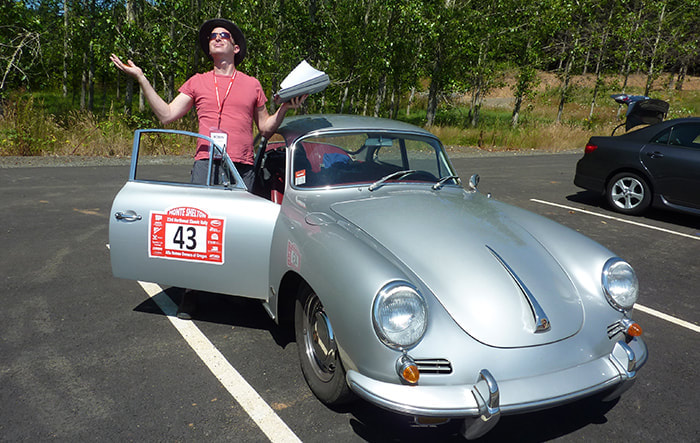
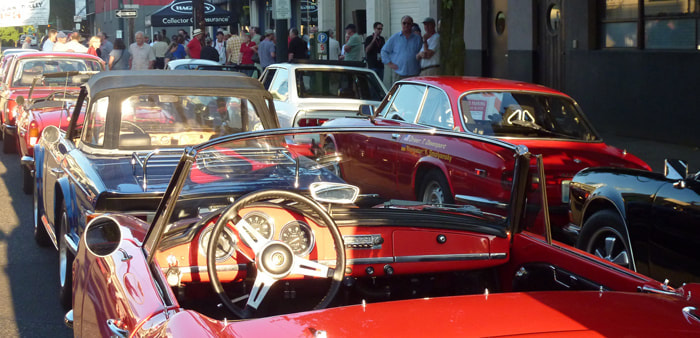
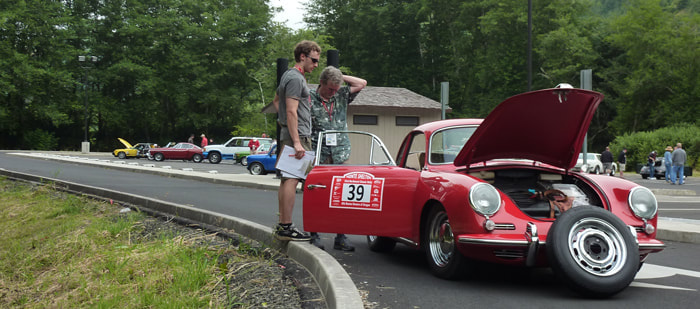

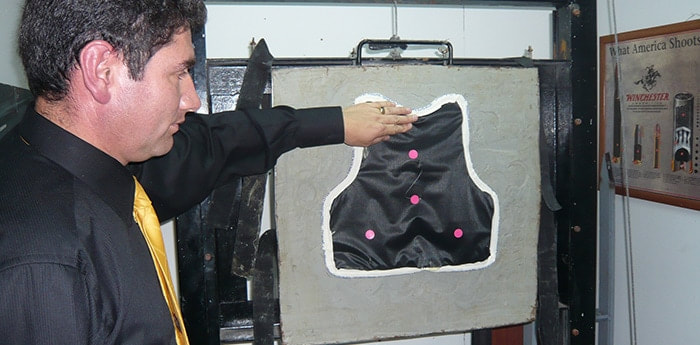
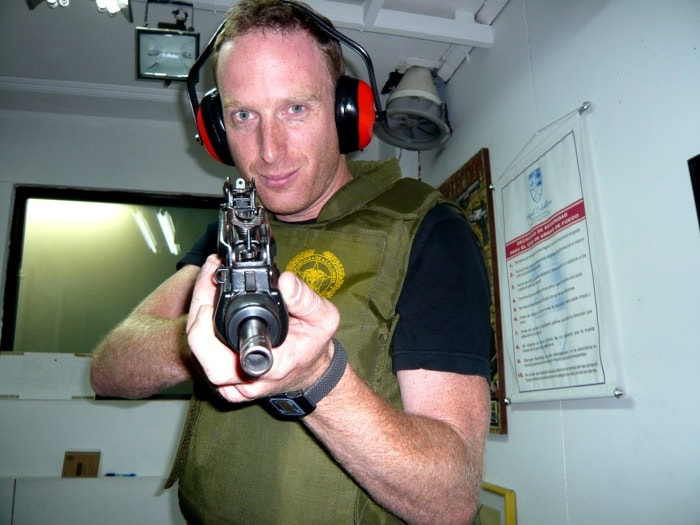
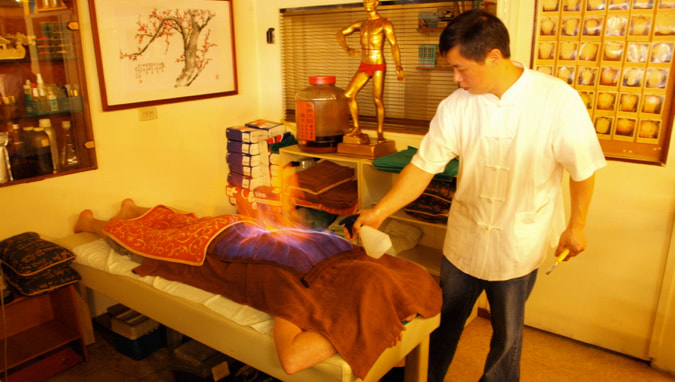
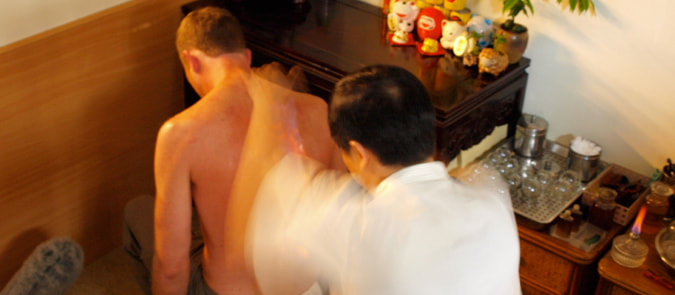

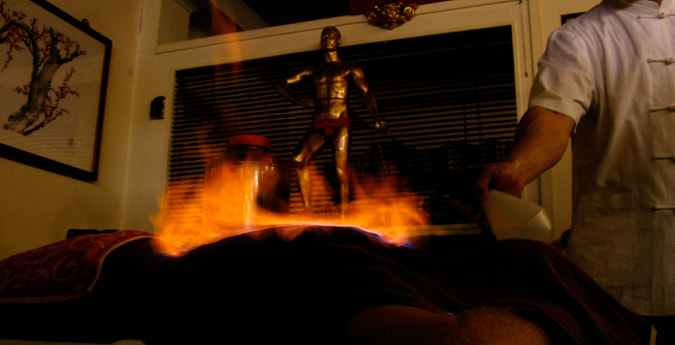


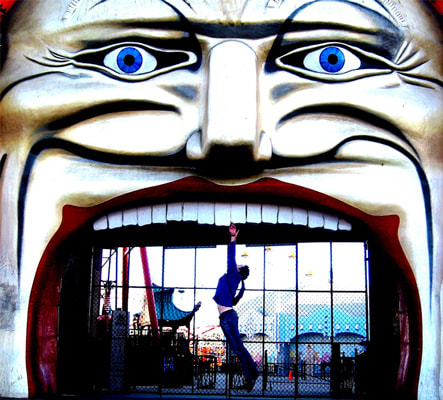


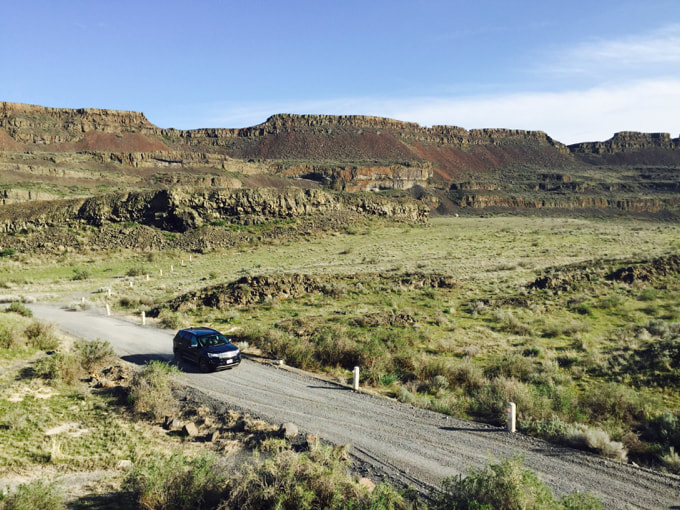
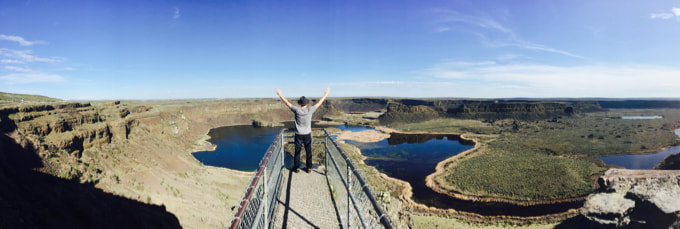

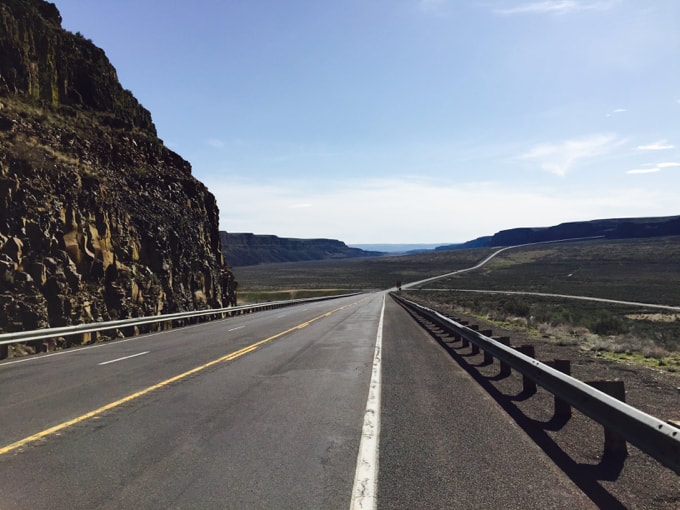
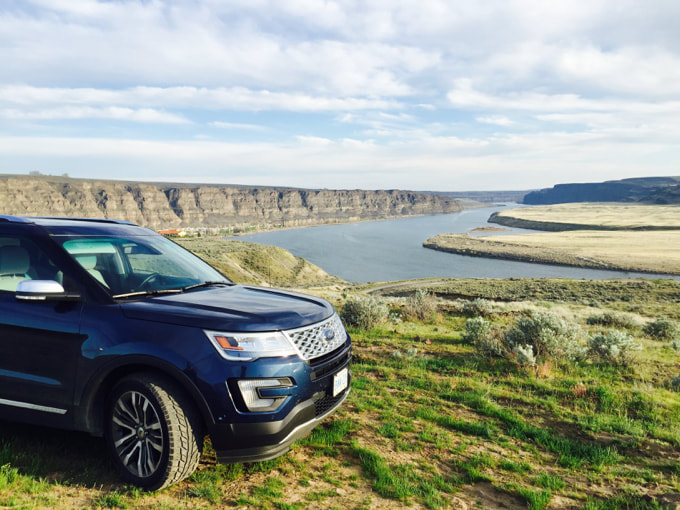
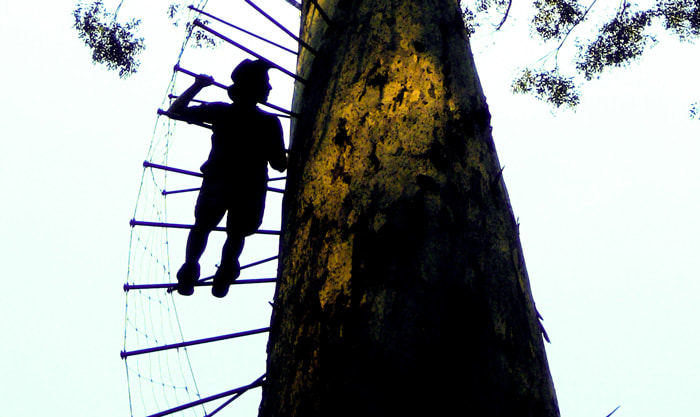
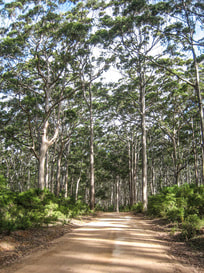

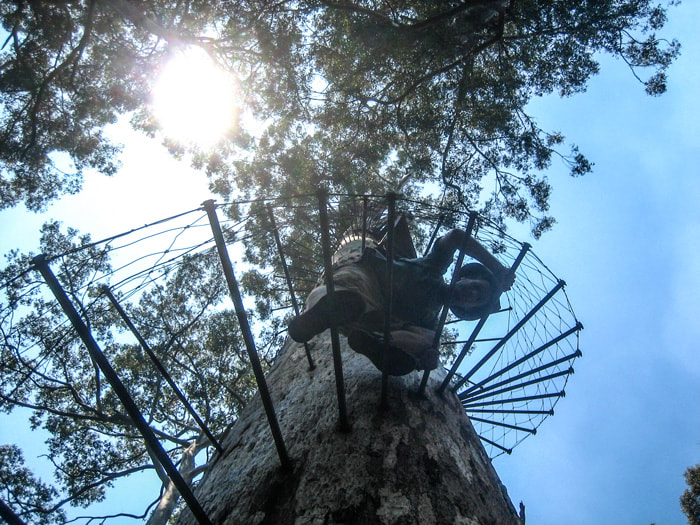
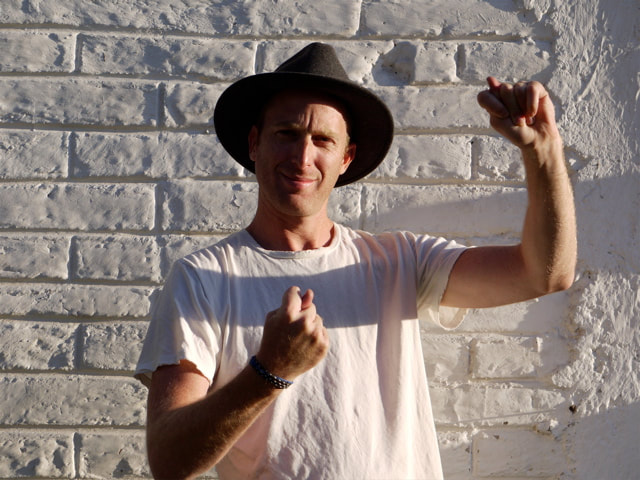
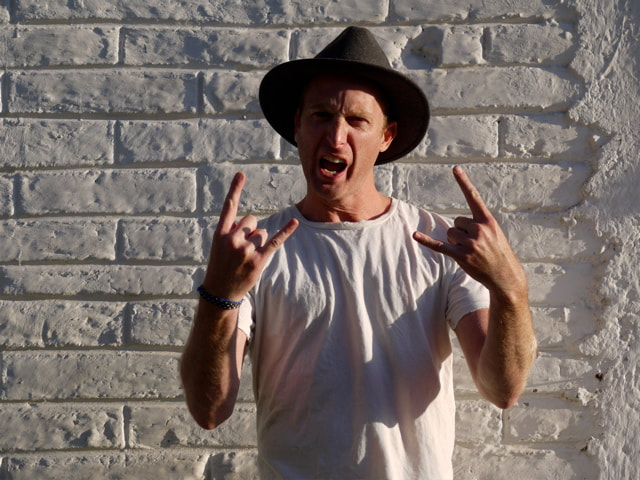


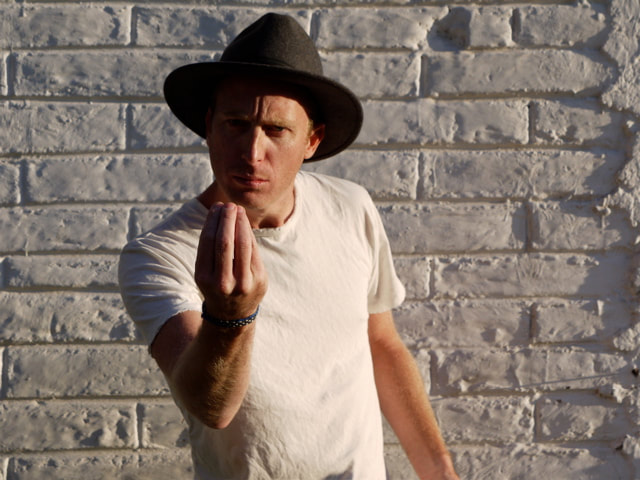
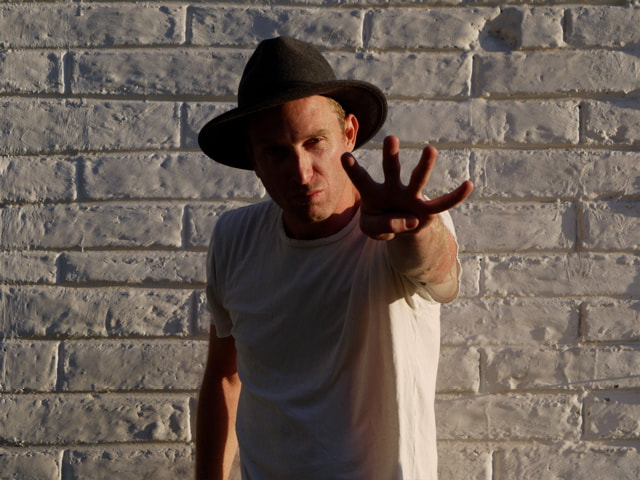
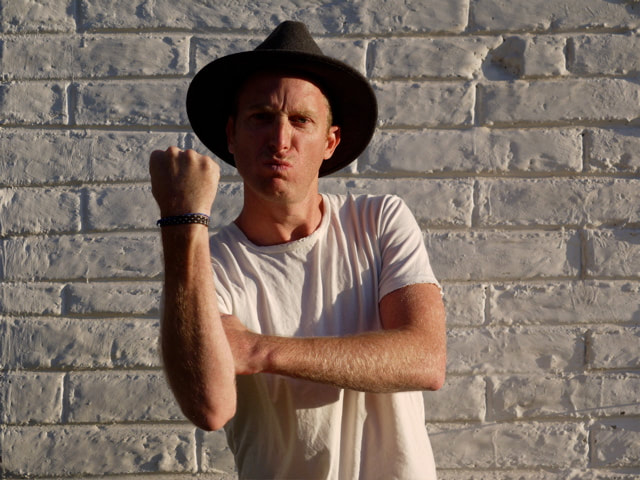

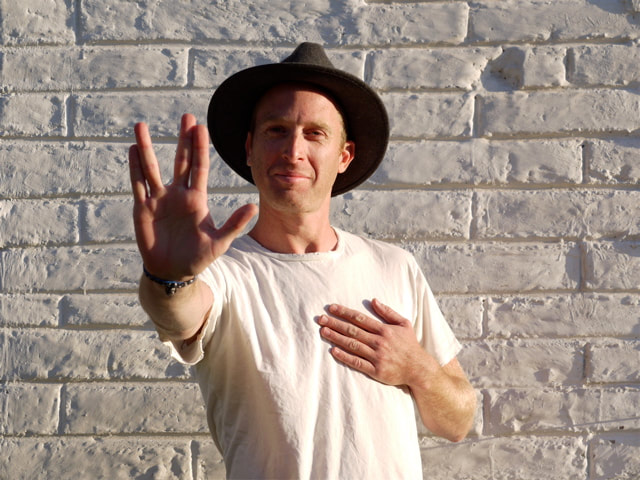
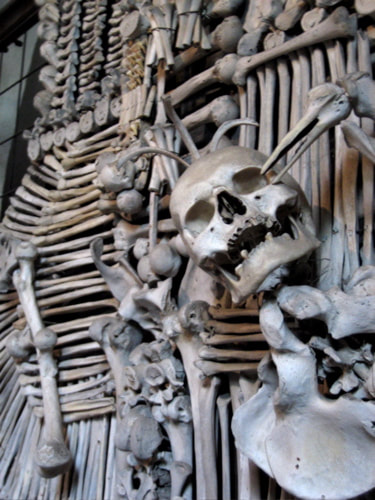
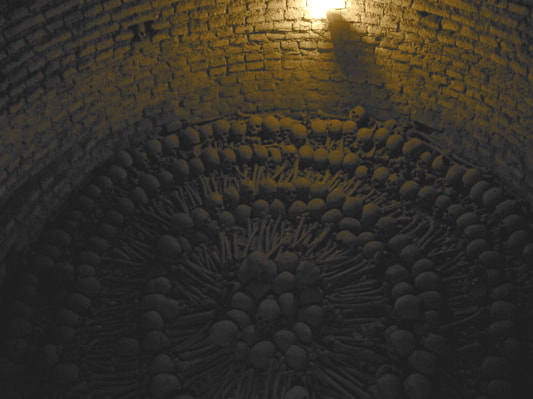
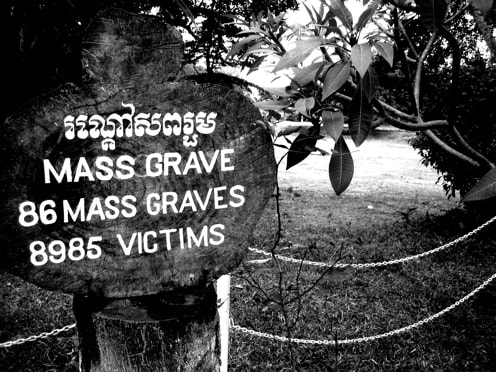
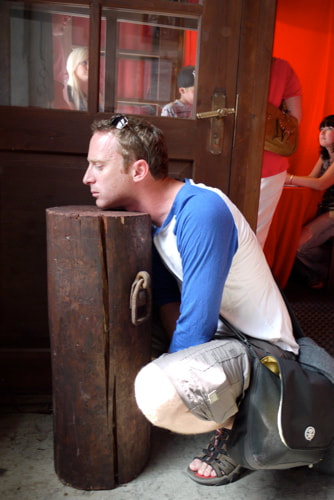
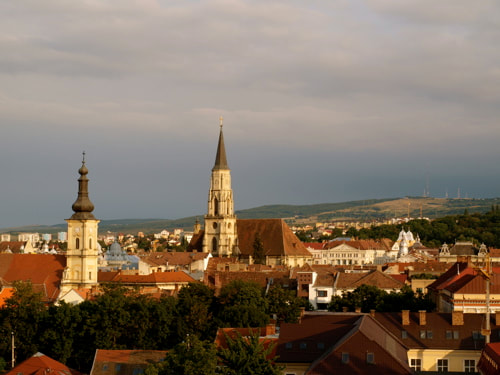
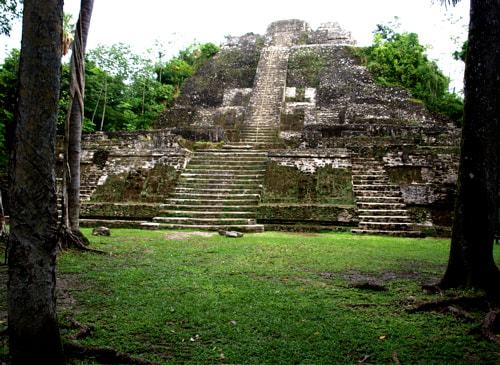
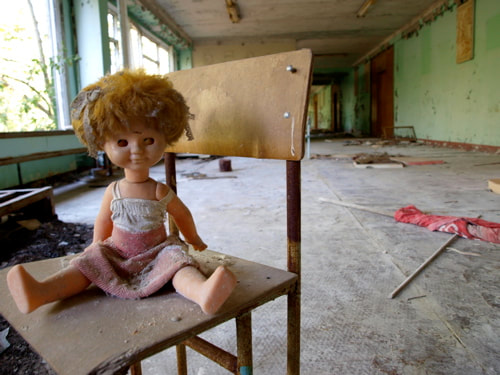
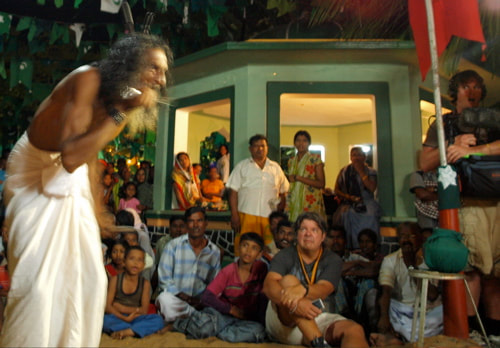
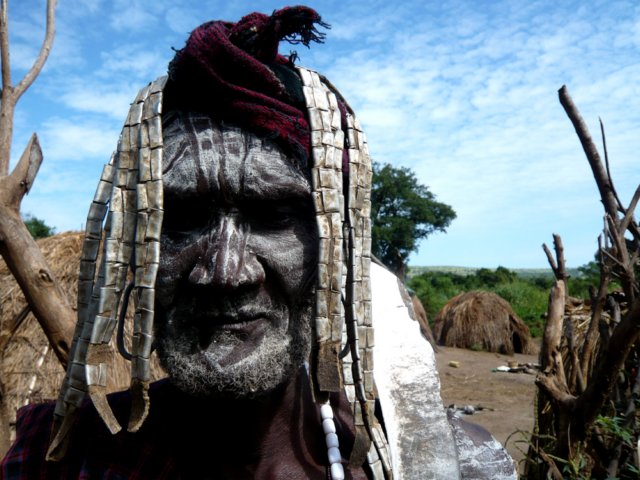
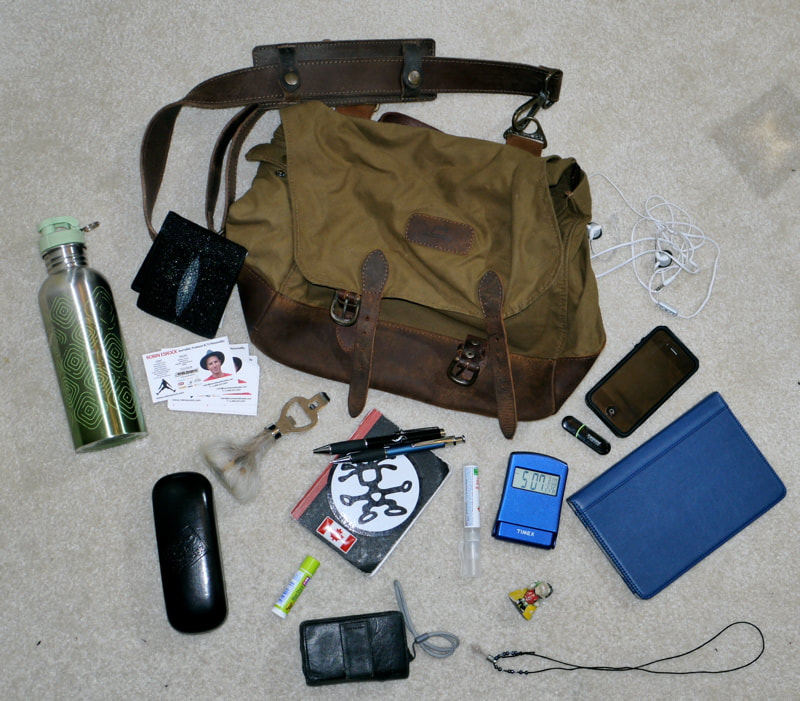
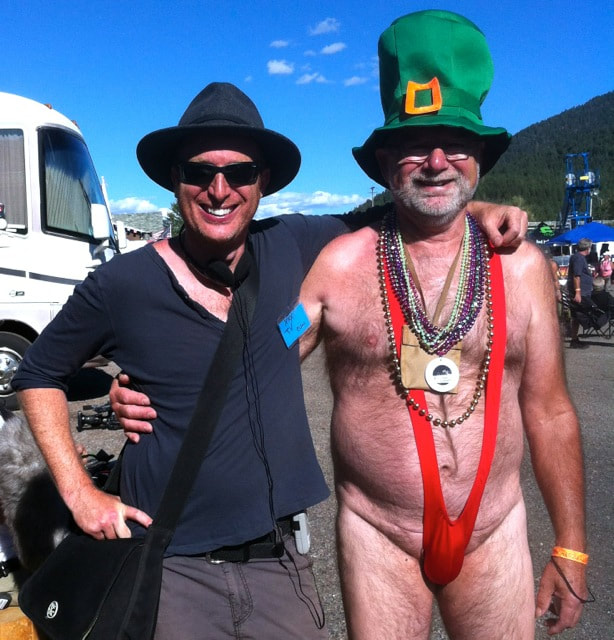
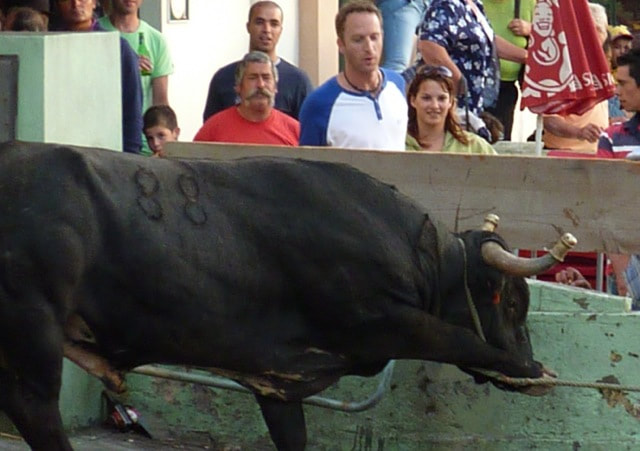
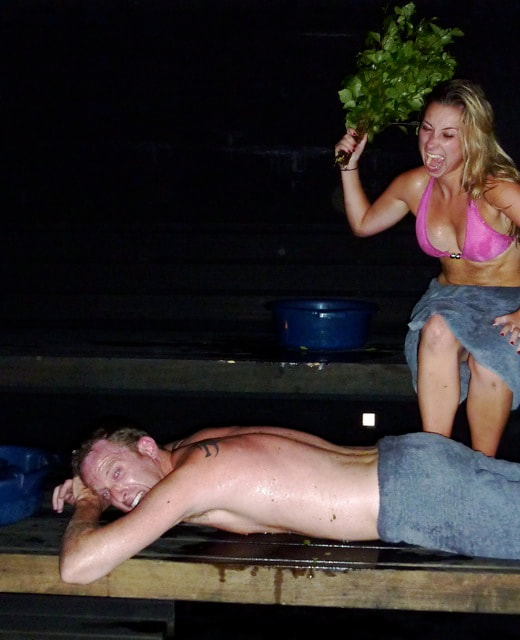
 RSS Feed
RSS Feed

